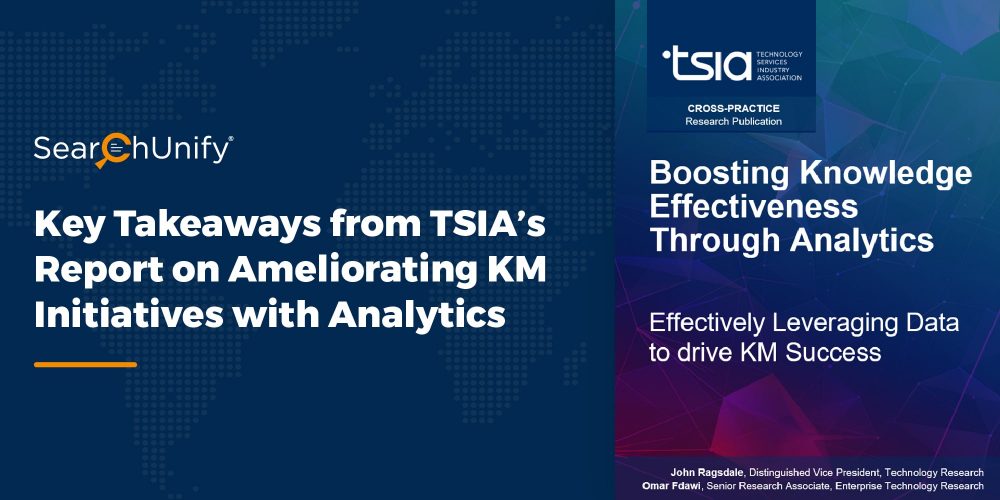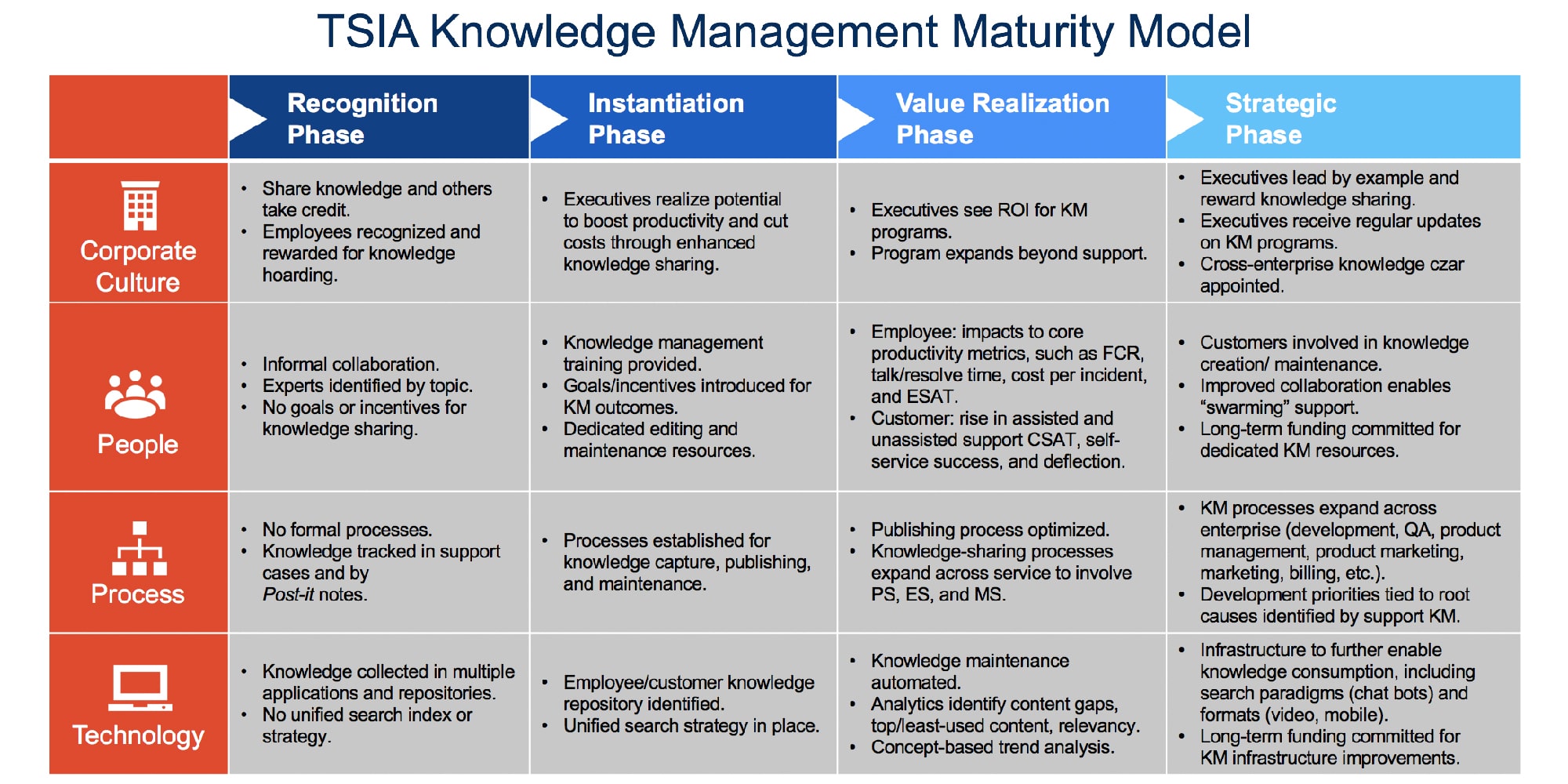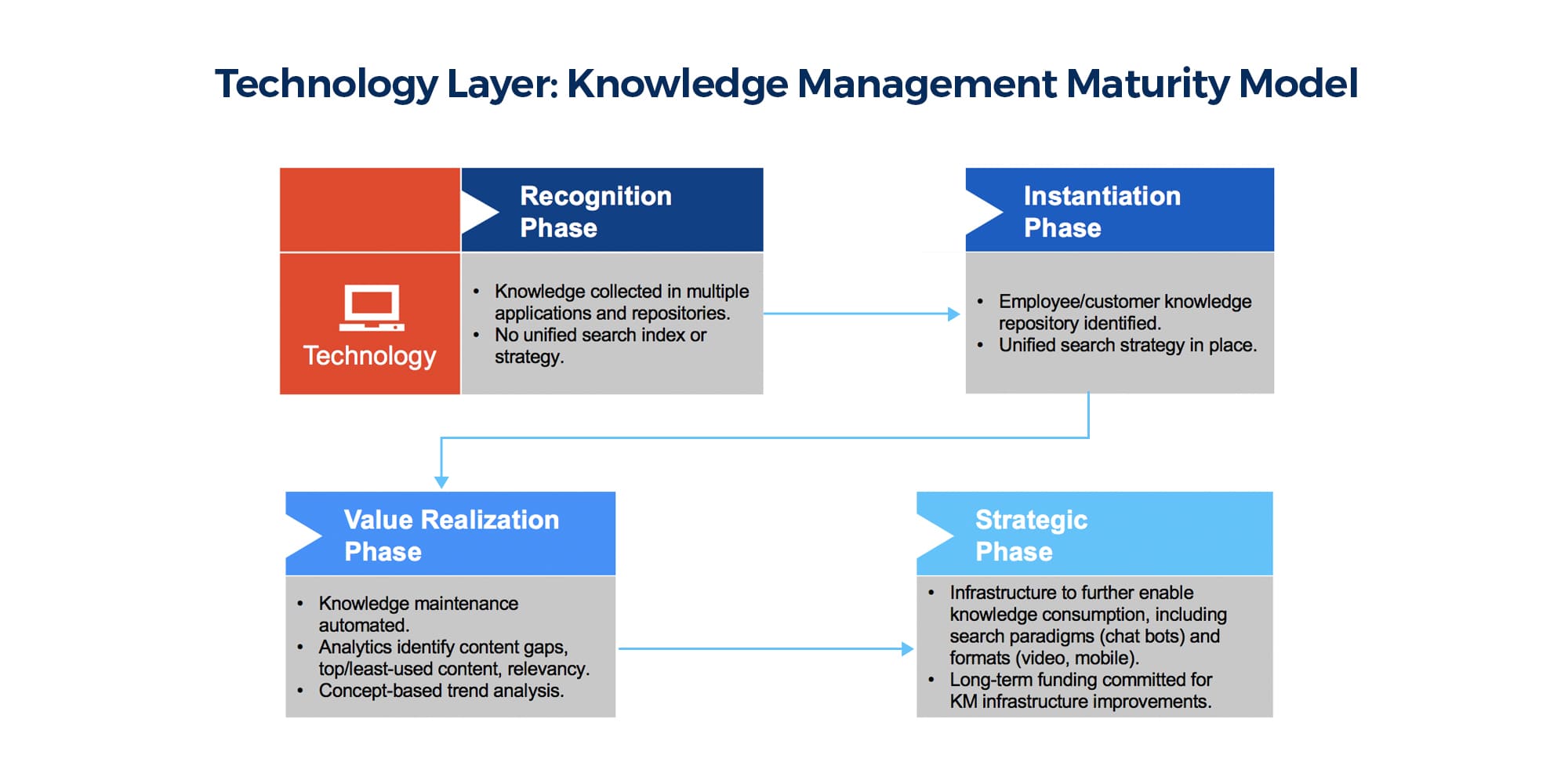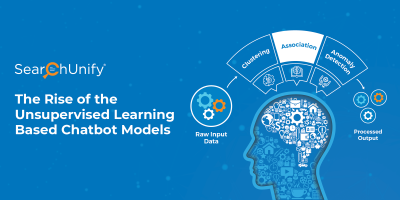
We are living in the information age, which makes knowledge one of the most potent weapon in a company’s arsenal. Seamless and timely access to relevant information can make or break a company’s ability to stay competitive.
Given the importance, it’s critical that organizations manage their knowledge effectively. But there’s a problem. Despite a good start, most organizations fail to keep the progress curve going up. With deep analytics, you can see that curve skyrocket.
But how can analytics help with knowledge management? How can firms effectively leverage analytics for better KM? To answer these questions, TSIA has published a report that explains the relationship between analytics and KM; and how to attain this KM nirvana.
Let’s take a quick look at the major points outlined in the report.
I. The TSIA Knowledge Maturity Model
With knowledge programs becoming mainstream all over the world, companies started looking for ways to assess the maturity of their KM practices. To help such firms, TSIA came up with the maturity model for knowledge management.

It uses four phases of maturity across people, process, technology, and corporate culture to enable enterprises to self-assess their KM strategy and identify ways to further improve knowledge sharing. Let’s take a closer look at what each phase encompasses:
- Recognition Phase: There are no formal programs, well-defined processes, or metrics in place specific to KM. Often employees are rewarded for being the only one with an answer, which indirectly promotes knowledge hoarding, not sharing.
- Instantiation Phase: Processes are identified to capture & share tacit knowledge. Repositories are identified and executives evaluate possible improvements in terms of quality, productivity, and cost if the program succeeds.
- Value Realization Phase: Once the tools and processes are in place, a measurable ROI is identified. Initial processes are optimized and interest in KM spreads beyond the core team.
- Strategic Phase: Collaboration and knowledge sharing becomes the norm paving the way for new approaches to staffing and organizational structures. KM processes extend throughout the firm and long-term commitments to infrastructure and staffing are provided.
II. Why KM Initiatives Derail
A recent TSIA survey revealed that almost half of technology companies consider themselves at the second phase (Instantiation) of knowledge maturity; up by 20% from the previous year. However, a measly 4% consider themselves in the final phase (Strategic).
The difference is massive especially when you consider that most brands start off on the right foot. So why is it that 96% of the KM programs couldn’t cross the finish line?
The report points out that the biggest setback here is insufficient maintenance of the program. A lot of research and discussions with TSIA members revealed that resources and interest in the KM program start sloping down by the second year.
III. Driving KM with Analytics
Analytics can pinpoint outliers that are easy to miss. As enterprises capture knowledge from documentation, learning management systems (LMS), online communities, etc., analytics can identify trends and usage patterns, thus doing a lion’s share of work for prolonged KM success.

A while back, creating analytical dashboards for KM was an expensive and time-consuming affair. Now, a lot of solutions come with analytics embedded into the core product for easier, yet advanced reporting. This makes the going a lot easier.
IV. Analytics for The Whole Organization
In the good ol’ days, KM was primarily being used for support operations. Businesses these days are leveraging the best KM practices across functions. Let’s see how analytics help other departments as well:
- Marketing: Identifying assets at the top & bottom of performance chart can help marketing to get a good idea about pieces that can generate more leads
- Sales: Juggling through prospects can be tiresome. Effective analytics highlight entire user journeys for better lead qualification and comprehension of key interests
- Professional Services: PS teams can use KM programs to capture key learnings from every project and then analytics can identify expert for a project in case of queries
- Customer Success: Onboarding customers is hard, especially in SaaS-based companies. Quality analytics can segregate knowledge according to customer maturity level and refine the onboarding process
Reports to Keep An Eye On
Organizations are constantly looking for new ways to extract more data and turning it into data-backed decisions. And thanks to several modern solutions like cognitive search engines, managers are able to leverage advanced analytics with the core product.
Would you like to know more about these search-powered insights engine and how they can help mature your KM process? Then take a look at the complete TSIA report here.














